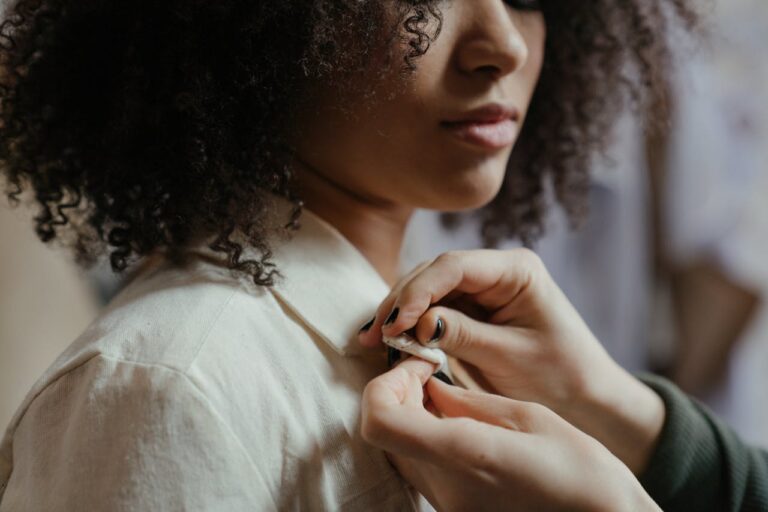Custom t-shirt printing is a powerful way to express your creativity, promote your brand, or simply make something that resonates with you. But whether you’re designing shirts for a business, an event, or a personal project, getting the printing process right is essential for achieving high-quality, long-lasting results. In this post, we’ll walk you through five essential tips that will help you create the perfect custom t-shirts every time.
Table of Contents
Toggle1. Choose the Right Printing Method
When it comes to custom t-shirt printing, the method you choose can make or break your design. There are several different printing techniques, and each one has its unique benefits. The most popular methods include screen printing, heat transfer printing, and direct-to-garment (DTG) printing.
Screen Printing: This traditional method involves creating a stencil (or screen) of your design and then using it to apply layers of ink onto the fabric. Screen printing is great for large orders with relatively simple designs, as it produces bold, vibrant colors and is cost-effective for mass production.
Heat Transfer Printing: This method uses heat to transfer a design from a special paper onto the t-shirt fabric. It’s ideal for designs that have lots of colors or intricate details. Heat transfer printing can work well for small orders or one-offs, but the print may not last as long as screen printing.
DTG (Direct-to-Garment) Printing: For more complex and colorful designs, DTG printing is a top choice. DTG printers apply ink directly to the fabric, which makes it easier to print detailed, full-color designs. This method is perfect for one-off orders or when you need designs with gradients and fine details.
Direct-to-Film Printing: This newer method uses a film to transfer the design onto the fabric, providing vibrant, full-color prints with excellent detail. It’s gaining popularity because it offers some of the best results in terms of color vibrancy and durability.
Each printing method has its place, so choosing the right one depends on the design, the quantity, and the type of fabric you’re using. Ensure that you research the advantages and limitations of each before making a decision.
2. Invest in High-Quality Fabric
No matter how good your design is, the fabric quality can significantly impact the final product. The fabric you choose plays a crucial role in how well the ink bonds, how vibrant the colors appear, and how long the print lasts.
Cotton: This is the most common fabric used in custom t-shirt printing. It’s soft, breathable, and works well with many types of printing methods. Cotton shirts are especially compatible with screen printing and DTG printing because they absorb ink well, providing bright and lasting results.
Polyester: Polyester is a popular choice for activewear or sports apparel. While it can sometimes present challenges in the printing process due to its smooth surface, modern printing methods like sublimation are great for polyester fabrics. Sublimation printing infuses the ink into the fabric, making it ideal for creating vibrant designs.
Fabric Blends: Many t-shirts are made from a blend of cotton and polyester. These blends often offer the best of both worlds, combining comfort with durability. Blends may require specific adjustments to the printing process, so it’s important to know your fabric and choose the printing method that works best for it.
When choosing fabric for custom t-shirt printing, always consider the end use of the shirts. Will they be worn regularly? Are they meant to be comfortable or durable? The right fabric ensures that your design will shine and last.
3. Design with Print Quality in Mind
Designing a t-shirt with print quality in mind is essential for ensuring a crisp and professional-looking final product. There are several factors to consider when preparing your design.
File Resolution and Format: High-resolution files are crucial for printing clear, sharp designs. A low-resolution file will appear pixelated when printed, which can negatively affect the final result. Ideally, your design should be at least 300 DPI (dots per inch) to ensure crispness.
When preparing files, vector files (such as .ai or .eps formats) are often the best option. They are scalable without losing quality, making them perfect for printing on various sizes of t-shirts.
Color Considerations: The colors you choose for your design should work well with the fabric you’re printing on. For example, dark fabrics tend to absorb light colors, which might make them appear more muted. When designing for darker fabrics, you may need to use a white ink underbase to ensure that the colors pop.
If you are using multiple colors in your design, make sure they are well-balanced. A design with too many colors or gradients may not translate well with certain printing methods, like screen printing, which has limitations on how many colors can be used effectively.
Simplicity is Key: While complex designs can be stunning, sometimes less is more. Intricate details may not show up well with certain printing methods, and busy designs can make the shirt less appealing. A simple, bold design can be more striking and impactful, while also being easier to print.
4. Pre-Press and Post-Press Quality Checks
One of the keys to ensuring consistently high-quality prints is performing both pre-press and post-press checks.
Pre-Press Inspection: Before sending your design to be printed, it’s essential to check everything thoroughly. Make sure that the resolution is correct, that the design is centered, and that the file is in the proper format. Double-check color choices to avoid any issues with fabric compatibility.
Post-Press Inspection: After the t-shirts are printed, take the time to inspect them for any defects. Look for smudging, misprints, or faded colors that could detract from the final product. Checking for any imperfections early on will save you time and money in the long run.
Proper post-press care also plays an important role in maintaining print quality. Once your custom t-shirts are printed, be sure to wash and store them according to the printer’s instructions. For most printed shirts, it’s best to wash them inside out in cold water and air dry them to preserve the print.
5. Partner with a Reliable Custom T-Shirt Printing Provider
To ensure that you consistently get high-quality custom t-shirts, partnering with a reliable printing provider is crucial. An experienced t-shirt printer will be familiar with the best practices for achieving excellent results.
Look for a provider that uses high-quality inks, reliable machines, and has a solid reputation. Check customer reviews and ask for samples to evaluate their work before committing to a large order. A good printer will help guide you through the process and offer advice on choosing the best materials, methods, and designs for your project.
It’s also a good idea to ask questions about their turnaround time, pricing, and customer service. Clear communication with your provider ensures that there are no surprises along the way.
Conclusion
Achieving the perfect print on custom t-shirts requires a mix of creativity, preparation, and quality control. By following these five essential tips—choosing the right printing method, investing in quality fabric, designing with print quality in mind, performing pre-press and post-press checks, and partnering with a reliable provider—you can ensure that your custom t-shirts come out looking their best every time. Whether you’re printing for a business, an event, or a personal project, the right approach will give you results that are sure to impress.











